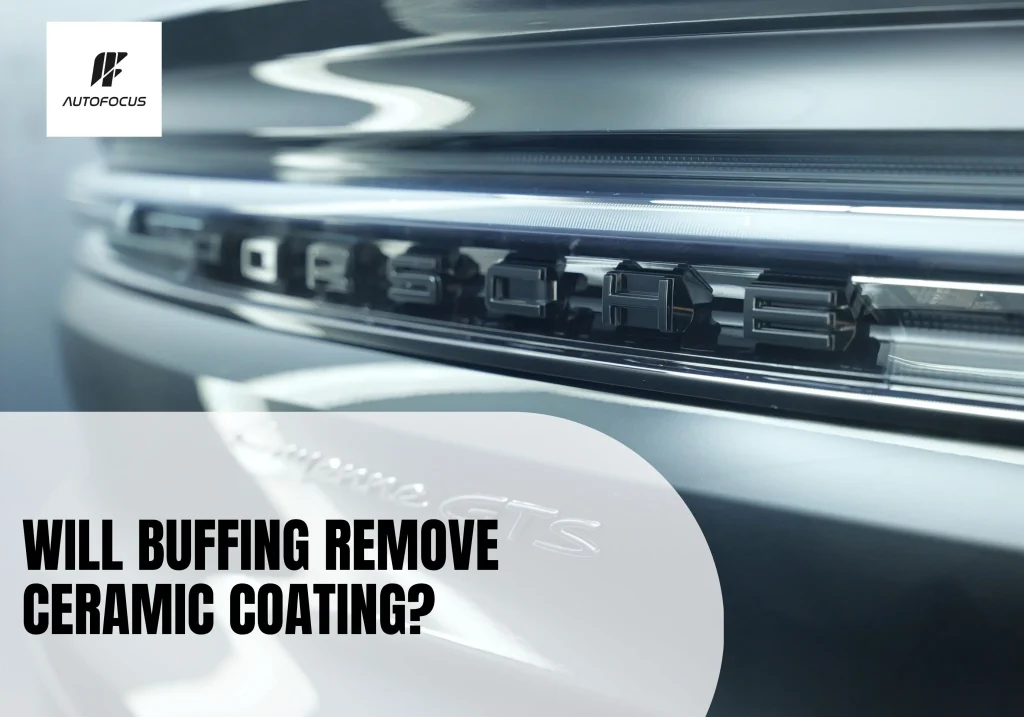
Why Ceramic Coating Is Either Your Best Investment or Biggest Waste of Money
When you get a ceramic coating done right, it bonds right down to the molecular level with your car’s paint, whipping up a tough shield that pushes away water, fights off grime, and keeps that fresh-from-the-showroom sparkle intact. Handled by pros with top-shelf stuff like STEK, Suntek, or Gtechniq, it hands over years of solid defence—way beyond what old-school waxes can even dream of.
But here’s the harsh reality: your ceramic coating turns useless the instant wrong maintenance starts eating away at it. Whether through harsh washing methods or—most critically—aggressive buffing that wasn’t meant for coated surfaces, your investment can deteriorate rapidly.
The Brutal Truth About Buffing and Coatings
The Science Behind Mechanical Removal
Researchers delving into shear-thickening polishing techniques found that material removal speeds up massively as pressure ramps up. In lab tests with silicon carbide ceramics, boffins managed to slash surface roughness from 451 nanometres down to a mere 9.7—but only by nailing precise pressure at 150 kPa, picking the right abrasive particles, and timing the process spot on.
When pressure increased beyond optimal levels, surface roughness continued climbing because excessive pressure reduced fluid flow between the polishing pad and surface, causing abrasive particles to penetrate deeper and create aggressive scratches.
What does this mean for your coated vehicle? Professional-grade ceramic coatings typically measure between 2-5 micrometres thick. The research proves that mechanical polishing can absolutely remove these protective layers if pressure, pad selection, and compound aggressiveness aren’t precisely controlled.
Factors That Determine Removal Success
Whether buffing removes your coating depends on several variables. The coating’s age and state really count—meanwhile, a newly cured one handles gentle polishing far better than something worn down by poor washing habits over months.
The abrasiveness of your buffing compound makes all the difference. Those heavy-cut ones built for fixing paint scratches? They’ll wipe your ceramic coating clean off, no doubt. Even medium-cut polishes can compromise thickness if used with aggressive pads or excessive pressure. Only soft finishing pads paired with coating-safe products offer viable options—and even then, only experienced professionals should attempt it.

Will Buffing Remove Ceramic Coating? It Depends on This
Types of Buffing That Strip Coatings
Rotary polishing with cutting compounds represents the fastest path to stripping your protection entirely. The combination of circular friction, heat generation, and abrasive compounds makes short work of even the most durable ceramic layers.
Dual-action polishers using medium-to-heavy-cut compounds create similar problems. Many mobile detailers default to these setups because they’re familiar with paint correction workflows—but these techniques aren’t appropriate for coated surfaces.
Coating Thickness and Durability Considerations
Studies into ceramic-boosted composites show how even a small ceramic boost changes everything about hardness and how well it wears. For instance, just 5% reinforcement bumped microhardness from 180-235 HV up to 244 HV. However, that came at a cost—less flexibility meant better defence against slow wear, yet it turned brittle and prone to snapping under heavy pressure.
The research demonstrated that harder ceramic materials experienced approximately 6 micrometres of wear versus 13 micrometres for softer alternatives. For your vehicle’s coating, premium products with higher ceramic content offer superior hardness that resists light polishing better—but they’ll fail suddenly once critical thresholds are exceeded.
Critical Signs Your Coating Is Already Failing
Marine coating specialists developed the Ceramic Removal Test (CRT) because visual inspection alone proves insufficient. Ceramic coatings pack a mix of compounds that form unique chemical bonds—like Si-O-Si, Si-B, Si-C, or Si-N—which react differently when stressed. Meanwhile, varying formulas tweak surface tension in their own ways, and if removal isn’t total, it sparks hydrophobic glitches leading to paint adhesion woes. Although professional surface analysis can detect coating presence, interpreting these results requires polymer expertise.
Watch for these indicators:
- Water beading degradation: Fresh coatings create tight, defined beads. Failed coatings allow water to sheet across surfaces.
- Increased dirt adhesion: Contaminants clinging to previously protected surfaces indicate coating breakdown.
- Visible high spots or uneven gloss: Partial coating removal creates an inconsistent appearance under direct lighting.
- Water spotting that won’t remove: Compromised coatings allow mineral deposits to bond with paint underneath.
Loss of slickness: Increased friction suggests coating degradation or removal.
This Is The Fastest Way to Destroy Your Paint
Paint Damage and Costly Mistakes
Aggressive buffing on coated surfaces creates a cascade of problems. First, you’ll strip the coating unevenly. Then, as you continue working to “blend” inconsistencies, you’ll cut through to the clear coat. Modern automotive clear coats typically measure 40-50 micrometres thick. Every micrometre you remove cannot be replaced.
The financial implications escalate quickly—what might have been straightforward and affordable professional maintenance becomes an expensive remediation project requiring complete coating removal, potential paint correction, and fresh application.
Why Professional Assessment Matters
How Professionals Remove Coatings Without Destroying Your Car
Advanced Techniques and Equipment
Research into non-contact shear thickening polishing methods reveals the precision professionals employ. Scientists achieved surface roughness improvements from 465.77 nanometres to 41.55 nanometres—a 91.1% improvement—through precisely controlled parameters including hydrodynamic pressure distribution, shear stress patterns, and abrasive particle velocity. The maximum error between predictions and actual results measured just 4.45%.
Professionals employ controlled chemical stripping using manufacturer-specific removers that dissolve ceramic bonds without touching paint. When mechanical enhancement is appropriate, they use progressively finer compounds designed specifically for coated surfaces.
The Autofocus Solution Approach

At Autofocus Solution, we begin with a thorough surface evaluation to determine whether enhancement or complete reapplication offers better value. We use only products formulated for ceramic-coated surfaces, and our technicians undergo continuous training with premium brands—STEK, Suntek, CarPro, and Gtechniq.
Our controlled environment facility prevents dust and temperature fluctuations that compromise installations. Every application includes manufacturer warranties—up to 12 years for premium products—plus our own guarantee on quality.
The Maintenance Secret That Saves Thousands in Reapplication Costs
Keeping your ceramic coating in top shape means sticking to smart habits day in, day out. Grab pH-neutral shampoos and the two-bucket wash method to stay gentle. Every 3-6 months, decontaminate to zap those stubborn contaminants. Then, quarterly, slap on manufacturer-approved boosters to revive that slick, water-repelling magic.
Professional coating maintenance packages remain remarkably affordable compared to complete reapplication, which proves significantly more expensive. Proper maintenance extends coating life from just a few years to potentially a decade or more, multiplying your investment return substantially.
Why Experts Handle Coatings Differently (And Why It Matters)
Get Expert Guidance for Your Ceramic Coating Needs
Your vehicle deserves protection backed by genuine expertise. At Autofocus Solution, we deliver premium paint protection using only the finest brands and techniques refined through meticulous attention to detail.
Whether you’re concerned about existing coating condition or seeking expert maintenance, our team provides honest assessments and transparent recommendations. Visit our comprehensive range of paint protection film, vinyl wrapping, and ceramic coating services. You can also speak with our expert car detailer by booking a complimentary consultation here.